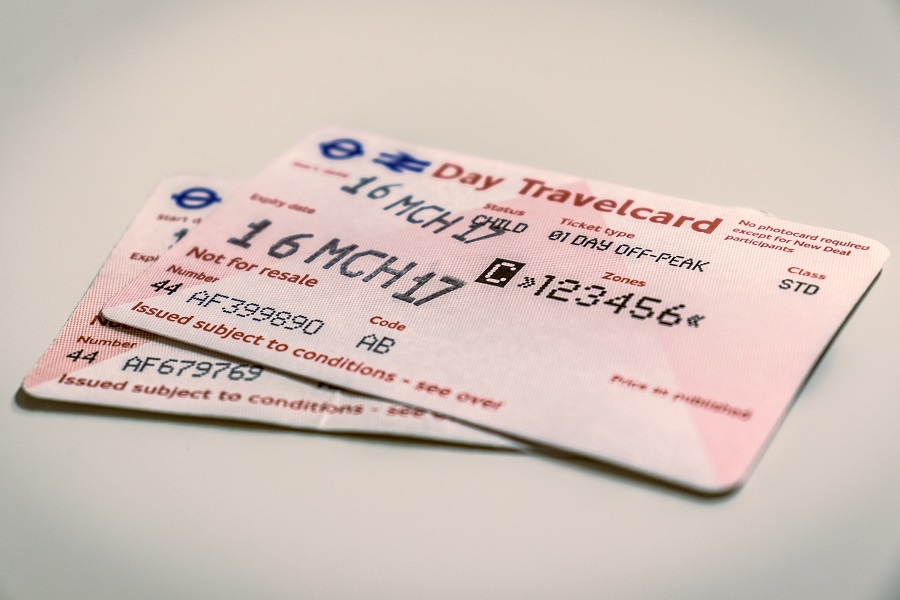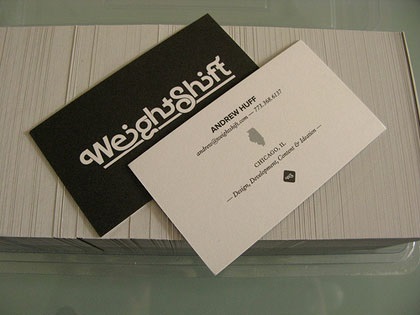In today’s highly competitive business landscape, personalised marketing is more important than ever. With consumers constantly being bombarded with generic advertisements, it’s becoming increasingly difficult to capture their attention and stand out from the crowd. That’s where variable data printing (VDP) comes in – a revolutionary technique that allows businesses to create highly personalised marketing materials that resonate with their target audience.
The Power of Personalisation
Personalization has been proven to be a powerful tool in marketing. It shows your customers that you understand their unique needs and preferences, making them more likely to engage with your brand. And that’s where variable data printing shines. By utilizing VDP, businesses can dynamically customize their marketing materials based on individual customer data, creating a one-to-one marketing experience that truly speaks to each recipient.
Imagine receiving a direct mailer that not only addresses you by your first name but also showcases products that align perfectly with your interests and buying behaviours. This level of customization goes beyond superficial personalization and creates a sense of exclusivity. It makes your customers feel special, knowing that the marketing materials they receive are tailored specifically for them.
Moreover, personalised marketing has been shown to significantly improve response rates and conversion rates. Customers are more likely to open, read, and respond to marketing materials that are relevant to them. By incorporating VDP into your marketing strategy, you can increase the effectiveness of your campaigns and ultimately drive more sales.
The Benefits of Customising Your Marketing Materials
Customization is not just about addressing your customers by their first name in an email or letter. It goes beyond that. With VDP, you can tailor every aspect of your marketing materials to appeal to each customer’s specific interests and buying behaviours.
Let’s take a closer look at how VDP can transform your marketing materials:
- Colour Psychology: By using your customers’ favourite colours in your marketing materials, you can create an immediate emotional connection. Colours have the power to evoke certain feelings and associations, and by incorporating this knowledge into your design, you can make a lasting impact.
- Product Recommendations: Showcasing products that your customers are most likely to be interested in not only increases the chances of a purchase but also demonstrates that you understand their preferences. By analyzing their past purchases and browsing history, you can curate a personalised selection that captures their attention.
- Compelling Copy: Personalisation goes beyond visuals. By tailoring the text in your marketing materials to address specific pain points or desires, you can create a message that resonates deeply with each recipient. This level of personalisation shows that you truly understand their needs and can provide solutions.
By implementing these customisation strategies, you can create marketing materials that stand out from the generic noise and capture your customers’ attention.
How Variable Data Printing Revolutionizes Print Marketing
Gone are the days of generic mass mailings that end up in the trash bin without a second glance. With variable data printing, print marketing materials become highly targeted and engaging. By merging customer data with print design, businesses can create eye-catching direct mailers, brochures, and catalogues that resonate with each recipient on a personal level.
Let’s explore the ways in which VDP revolutionises print marketing:
- Dynamic Text: Variable data printing allows you to dynamically change text based on each customer’s unique profile. This means you can include their name in the headline or throughout the content, creating a sense of personal connection. It’s a small detail that can make a big impact on the recipient.
- Customized Images: Just like text, VDP enables you to incorporate personalised images into your print materials. Whether it’s showcasing products they’ve previously purchased or featuring visuals that align with their interests, customized images add an extra layer of personalization that captures attention.
- Layout Flexibility: With VDP, you have the freedom to adjust the layout of your print materials based on individual customer preferences. This means you can prioritize certain products, highlight specific offers, or tailor the overall design to match their preferences. The result is a visually appealing piece that speaks directly to the recipient.
Additionally, VDP enables businesses to integrate cross-channel marketing strategies seamlessly. By aligning print marketing materials with digital campaigns, you can create a consistent brand experience and reinforce your message across different touchpoints. This synergy between print and digital channels enhances the overall impact of your marketing efforts.
In conclusion, variable data printing is a game-changer in the world of marketing. It allows businesses to create highly personalised and engaging marketing materials that resonate with each individual customer. By leveraging customer data and tailoring every aspect of your materials, you can increase response rates, drive conversions, and ultimately build stronger relationships with your audience.
Unleashing the Potential of Variable Data Printing
Now that we understand the power of personalization and how VDP revolutionizes print marketing, let’s dive deeper into the inner workings of variable data printing and explore its full potential.
Exploring the Inner Workings of Variable Data Printing
Variable data printing is a combination of cutting-edge technology and design. It starts with collecting and analyzing customer data, segmenting your audience, and understanding their preferences and behaviours. Armed with this valuable information, you can proceed to create customized templates that serve as the foundation for your variable data printing.
Imagine a scenario where a clothing retailer wants to send out a promotional mailer to its customers. With variable data printing, they can create personalised templates that showcase different clothing items based on the customer’s past purchases or browsing history. For example, if a customer has previously bought a pair of jeans, the template can be customized to display similar jeans or other related products that might catch their interest.
Next comes the data merge process, where customer data is merged with the templates to create personalised versions of your marketing materials. This process can be automated, ensuring efficient and accurate production even for large-scale campaigns.
Let’s continue with our clothing retailer example. Once the personalised templates are ready, the retailer can merge them with the customer data, such as names, addresses, and purchase history. The result is a set of unique mailers that are tailored to each individual customer. This level of personalization not only enhances the customer experience but also increases the chances of engagement and conversion.
Once the personalised marketing materials are printed, businesses can leverage VDP to track and measure the effectiveness of each campaign. By analyzing response rates and conversion rates, you can gain insights into what resonates with your audience and continuously refine your marketing efforts to achieve optimal results.
Clothing retailers can track which customers responded to the mailer by using unique QR codes or personalised URLs. This data can then be analysed to determine which products or offers were most successful in driving customer engagement and sales. Armed with this information, the retailer can make data-driven decisions to further improve their marketing strategies and maximize their return on investment.
Moreover, variable data printing allows businesses to conduct A/B testing on a large scale. By creating multiple versions of the same marketing material with slight variations, such as different headlines or images, you can test which version performs better. This iterative approach helps you uncover the most effective messaging and design elements for your target audience, leading to improved campaign performance over time.
In conclusion, variable data printing is a powerful tool that enables businesses to create highly personalised and targeted marketing materials. By understanding the inner workings of VDP and exploring its full potential, businesses can unlock new opportunities for customer engagement, conversion, and growth.
Harnessing the Potential of Variable Data Printing in Marketing
Variable data printing (VDP) offers endless possibilities for businesses to create highly targeted and engaging marketing materials. By incorporating customer data into print marketing campaigns, businesses can deliver tailored messages and offers that grab attention and drive response rates. Let’s explore some creative ways to leverage the power of VDP in your print marketing campaigns.
Creative Ways to Use Variable Data Printing in Print Marketing
- Create personalised direct mail campaigns:
By incorporating customer data into direct mailers, you can deliver tailored messages and offers that grab attention and drive response rates. Imagine receiving a direct mail piece that addresses you by name and showcases products or services that align with your interests. Personalization through VDP can significantly increase the effectiveness of your direct mail campaigns.
- Customise brochures, event tickets & school certificates:
With VDP, you can showcase different products or services based on each customer’s interests, ensuring your brochures resonate with their specific needs. Imagine receiving a brochure that features products you have previously shown interest in or items related to your past purchases. This level of personalisation not only captures attention but also increases the likelihood of a purchase.
- Personalise catalogues:
Using VDP in catalogues allows you to present products that are relevant to each individual customer, making their shopping experience more enjoyable and increasing the likelihood of a purchase. Imagine receiving a catalogue that showcases products tailored to your personal style and preferences. By utilising VDP in catalogues, businesses can create a unique shopping experience for each customer. From featuring items that align with their past purchases to providing personalized recommendations, VDP in catalogues increases customer engagement and drives sales.
Variable Data Printing in Catalogues: Tailoring the Shopping Experience
Imagine receiving a catalogue that showcases products tailored to your personal style and preferences. By utilising VDP in catalogues, businesses can create a unique shopping experience for each customer. From featuring items that align with their past purchases to providing personalized recommendations, VDP in catalogues increases customer engagement and drives sales. The ability to customise catalogues based on individual preferences allows businesses to stand out from the competition and provide a more enjoyable shopping experience.
Personalised Direct Mail Campaigns: A VDP Success Story
Different approaches to variable data printing offer businesses the opportunity to truly connect with their customers on a personal level. By harnessing the power of personalisation through VDP, businesses can create marketing materials that not only grab attention but also drive results. Whether it’s through customised direct mail campaigns, personalised brochures, or tailored catalogues, VDP allows businesses to engage their target audience in a meaningful way and achieve maximum impact. So, if you want to take your marketing to the next level and stay ahead of the competition, consider harnessing the potential of variable data printing for effective personalisation.
P.S. Sign up to our Newsletter to join over 3000 successful business owners in the know.
Let’s Dig Deeper into where you can use Variable Data Printing.
Variable–data printing (VDP) may sound like a statistical term but is a form of digital printing where text, graphics and images are varied from one printed unit to the next. In other words, you can print 24 sets of 100 membership cards with different names, IDs and images without stopping your printing to change the artwork. This is automatically done by referencing a database or external file that has all the varied elements. This form of printing is also known as variable–information printing (VIP) or variable imaging (VI).
How Do I Use It In My Business?
The most common method for setting up artwork for variable data printing is to use specialised software (and plugins). This includes software such as Adobe InDesign, to combine the static and variable elements into print files. This produces a PDF/VT, PostScript or PPML file that can be sent directly to the digital printer to start the process.
Inform your designer of what you intend on printing and how you wish to use it, to ensure that the file is designed and formatted for variable printing.

It can be made using most design software
When Should I Use It?
The main benefit of variable data printing is making your marketing material, business stationery, or any printed piece more personalised and therefore more engaging.
Quick fact: 59% of shoppers say personalisation has an influence on their purchasing decision (Infosys).
Here are a few more use cases.
Integrated Marketing
Variable data printing presents an opportunity to create an integrated customer journey for a specific person you are targeting.
For example, you can print a QR Code or Personalised URL that leads your client or prospect to a tailored landing page or login portal that addresses that specific client or prospect. Any interaction with that code/URL is trackable which provides insights on how your campaign is performing as well as behavioural data specific to that individual.
You can follow this up with an email/sms offering the client an incentive to complete a certain action. This additional communication is only sent to the client upon interacting with the specific code/URL.
[Related: Omnichannel Marketing – An in-depth example and how to guide]
Membership cards
A simple membership card can be printed with your company logo and name. A personalised membership card has the holder’s name, unique ID, and picture. This can make a big difference in the sense of ownership and belonging to your organisation or club.
Related: Plastic PVC cards – The what, how and why

Membership or Access Cards
Seating Cards
If you’re hosting a business event, a wedding or a dinner, then a custom seating card/invite will make for a memorable takeaway and keepsake for your attendees.

Personalised Seating Cards and Invites
Gift Cards
Gift cards can sometimes feel like a thoughtless gift. Therefore, adding some personalisation to the gift card can make all the difference between a last-minute gift versus a thoughtful gift.
You can also use variable data printing to create referral cards with the referrer’s and referral’s details. You can even use a personalised message and a unique gift code for the referral.

Turn your gift card into a thoughtful gift with some personalisation
Business Cards
Your business cards are hardly printed in isolation unless you are a freelancer. Variable-data-printing allows you to create and print multiple sets of business cards with the varying details of each individual in your organisation without needing to place many separate orders.

Business Cards
The Bottom Line
The benefit of variable data is the ability to design and print more personalised collateral that will appeal to your recipient and result in higher engagements and meaningful actions.
You can use variable-data-printing to print a number of items such as business cards, gift cards, membership cards and more.






